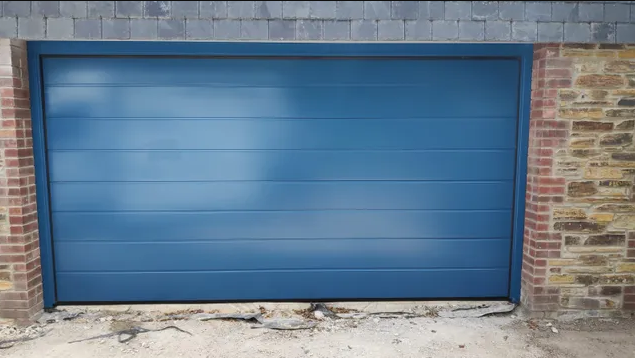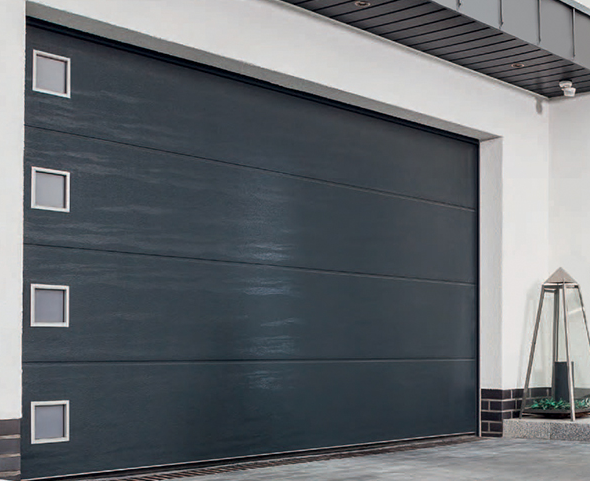Disadvantages of sectional garage doors include high initial costs, ongoing maintenance issues, limited manual operation, and safety risks like pinching hazar
Mechanical Complexity
Multiple Moving Parts
Sectional garage doors operate using a complex arrangement of springs, pulleys, and tracks. This complexity means there are numerous points of failure, complicating the diagnosis and repair of issues. For example, a malfunction in one of the springs can offset the balance of the entire door. Moreover, each component needs periodic lubrication and adjustment to ensure smooth operation, leading to higher maintenance requirements over time.
For more in-depth information, you can consult the Wikipedia page on garage doors.

Maintenance Issues
The complexity also leads to frequent maintenance needs. Small issues like dirt in the tracks or a slightly misaligned pulley can lead to larger operational problems. These are not just simple fixes you can do with basic tools; in many cases, you will need professional assistance. Ongoing maintenance also poses an increased risk of injury, as adjustments often involve dealing with high-tension springs or heavy sections of the door.
Check out this Wikipedia article on preventive maintenance for tips on how to mitigate some of these issues.
Cost
Initial Investment
Sectional garage doors often come with a hefty price tag, especially when you opt for higher-quality materials like insulated steel or aluminum. The initial cost includes not just the door itself but also specialized hardware and mechanisms essential for operation. Plus, you’ll likely need to hire a professional for installation, further bumping up the initial outlay. These factors make sectional garage doors a more expensive option compared to other types like roll-up or swing-out doors.
For more information on the costs associated with different types of garage doors, you can visit this Wikipedia page on garage doors.
Long-term Expenses
While the initial investment is already considerable, long-term costs can also accumulate quickly. Given the mechanical complexity of these doors, maintenance isn’t just a one-time event. Springs wear out, tracks need realignment, and pulleys require replacement, all of which contribute to ongoing costs. Not to mention, any advanced features like automatic openers or smart technology interfaces will need updates and possibly repairs over time.
For general guidelines on the concept of long-term costs, the Wikipedia article on Total Cost of Ownership provides useful insights.
Space Requirements
Overhead Space
Sectional garage doors retract upwards and sit parallel to the ceiling when open. This design necessitates substantial overhead space to accommodate the retracted door panels and the mechanical components like springs and tracks. If your garage has a low ceiling or you use the overhead space for storage, a sectional garage door might not be the best choice for you. For instance, installing a loft or hanging storage racks can become challenging with the door’s overhead mechanisms in place.
For more context on how overhead space can be crucial in design, you may want to read the Wikipedia page on Ergonomics.
Side Room
In addition to requiring ample overhead space, sectional garage doors also need sufficient side room for the tracks. If your garage has limited width or if the walls near the door are in use for shelving or other installations, you’ll find this to be a significant limitation. The tracks can take up valuable space that could otherwise serve functional purposes, such as storing tools or other equipment.
To understand more about effective space utilization, you can consult this Wikipedia article on Space Utilization.
Installation Difficulties
Professional Installation Needed
Installing a sectional garage door is not a task for the average DIY enthusiast. The complex mechanism involves precise alignment of tracks, tensioning of springs, and electrical wiring for automated systems. A slight mistake can not only compromise the functionality of the door but also pose safety risks, like a door that suddenly falls due to misaligned tracks. As a result, most people end up hiring professional installers, which adds to the overall cost.
For a broader understanding of the challenges in specialized installations, you might find this Wikipedia page on Installation Art intriguing, as it discusses complexity in a different context.
Time-consuming Process
The intricacies involved in the installation process make it time-consuming. Professional installers may need a whole day or even more, depending on the condition of your garage and the type of door you choose. This time commitment may disrupt your regular activities and could pose inconveniences, such as having to take a day off work to oversee the installation.
For more insights into the importance of time management during complex processes, you can visit the Wikipedia article on Time Management.
Energy Efficiency
Insulation Issues
While some sectional garage doors offer insulation options, these often fall short in terms of energy efficiency. The multiple panels and joints between them can lead to poor thermal performance, letting cold air in during the winter and warm air in during the summer. If you use your garage as a workspace or if it’s connected to your home, this lack of insulation can have a considerable impact on your heating and cooling bills.
For a deeper understanding of insulation and its importance, you can read this Wikipedia page on Thermal Insulation.
Air Leaks
Another issue affecting the energy efficiency of sectional garage doors is the potential for air leaks. Gaps can form around the door’s perimeter or between the sections, especially if the door isn’t perfectly aligned or has seen some wear and tear. These air leaks further compromise the door’s insulation capabilities, making it even harder to maintain a consistent temperature in the garage or adjoining areas.
For more information on how air leaks can affect energy consumption, check out the Wikipedia article on Building Performance.
Safety Concerns
Pinching Hazards
Sectional garage doors consist of multiple panels that fold or roll as the door operates. During this movement, fingers or hands can easily get caught between the sections, especially if safety features are lacking or have been compromised. This poses a significant risk, particularly for households with children who may be unaware of the hazard.
For a broader context on safety hazards, you can consult the Wikipedia page on Occupational Safety and Health.

Heavy Weight
Sectional garage doors are often quite heavy due to their construction materials and the mechanical components that support their operation. If a failure occurs in the lifting mechanism or if the door falls for any reason, it can result in severe injuries or even fatalities. It’s crucial to regularly check the functionality of safety features like auto-reverse mechanisms to mitigate this risk, but the sheer weight of the door remains a safety concern.
For more information on the impact of heavy objects and safety, the Wikipedia article on Heavy Industry provides some insights.
Aesthetic Limitations
Limited Customization Options
While sectional garage doors come in various materials and finishes, their basic design often limits customization options. Most sectional doors feature horizontal panels, and changing this basic structure can be challenging. This limitation can be a drawback for those looking to make a style statement or match a specific architectural style. The need to conform to the basic design of sectional doors can stifle creativity and individual expression.
For a comprehensive understanding of the importance of aesthetics and customization, you may find the Wikipedia article on Aesthetics helpful.
Bulky Appearance
Due to their structural needs, including tracks and springs, sectional garage doors often have a bulky appearance. This can be particularly problematic in settings where sleek, minimal design is desired. The bulkiness not only affects the door itself but also extends to the internal appearance of the garage, where tracks and other hardware are visible. This could be a downside for homeowners who are particular about the look and feel of their homes and garages.
To explore how appearance affects architecture and design, take a look at this Wikipedia page on Minimalism.
Operational Noise
Sound Insulation
Despite advancements in technology, many sectional garage doors still suffer from poor sound insulation. The operation of the door involves moving parts like tracks, springs, and rollers, which can create a significant amount of noise. This can be a particular issue during late-night or early-morning operations, disturbing not just the household but potentially also the neighbors. Insulating against this noise often requires additional investment in soundproofing materials, adding to the overall cost.
For an expanded understanding of sound insulation, you might find this Wikipedia article on Soundproofing useful.
Noise Pollution
Over time, the operation of a sectional garage door can lead to increased levels of noise pollution. Components wear down, get misaligned, or require lubrication, all of which can contribute to escalating noise levels. This isn’t just a matter of inconvenience; in some jurisdictions, excessive noise can result in fines or other penalties, especially if it disturbs the peace in residential areas.
To better understand the environmental and social aspects of noise pollution, you can visit this Wikipedia page on Noise Pollution.
Limited Manual Operation
Difficult to Operate Manually
Sectional garage doors, particularly those that are large and heavy, pose a challenge when you try to operate them manually. While most models come with an emergency release to disconnect the door from the opener, lifting and lowering the door by hand can be strenuous due to its weight and the resistance from springs. This can be a significant issue during power outages or if the automated system fails for any reason.
For more insights into the limitations of manual operations in different contexts, you can read the Wikipedia article on Manual Labour.

Dependency on Electrical Power
Many modern sectional garage doors rely heavily on electrical power for their operation. If there’s a power outage, you may find yourself either stuck outside your garage or unable to get your car out. Even though emergency manual operation is usually an option, as previously mentioned, it can be challenging. This dependency on electricity makes sectional garage doors less reliable in cases of power loss or fluctuations.
To learn about how dependency on electrical power impacts various aspects of life, take a look at this Wikipedia page on Electricity.
